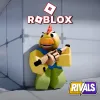
Amazing News!
Transitioning Web Landscape: Filling the Void Left by Twitter
Twitter's downfall has sparked the development of many short-post-focused social platforms. Examples include open-source favorites like Mastodon, new decentralized concepts like Bluesky, offerings from smaller startups like Post, Spill, and Spoutible, and tech behemoths like Meta. This advancement is fantastic for individuals seeking a new home after Twitter's downfall, although it poses a challenge for early adopters wanting to experiment with new platforms and services.
It is not just the small startups stepping into this space; the popular Mac and iOS newsreader app Reeder's developer, Silvio Rizzi, is currently creating a Reeder replacement. Likewise, Tapbots, the Mastodon client Ivory's creators, are contemplating how to navigate the growing number of social networks available. Several other services target the requirement of power users and creators to simultaneously post on multiple networks.
However, this explosion of new social networks is overwhelming for many. This issue has attracted a group of developers whose goal is not to replicate or improve Twitter but to solve the problem of "too many Twitters." Last week, The Iconfactory, best known for its early Twitter client Twitterrific, unveiled Tapestry, intending to provide a unified app for tracking social media, news, and RSS feeds.
Furthermore, there are various web3, blockchain-based networks, and protocols, and several decentralized protocols that are nurturing their networks. These include Farcaster and Lens and other alternatives favored by Twitter co-founder Jack Dorsey, such as Nostr.
In conclusion, the web's current state is ever-evolving, with many protocols, platforms, and ways to connect people, their media, their ideas, and links to websites, news, and blogs. Aggregators like Tapestry might be the first step to figuring out how to navigate this new web, but it also signals the need for a new way to search it: a new Google of sorts capable of tapping into all the activity now happening beyond websites.





